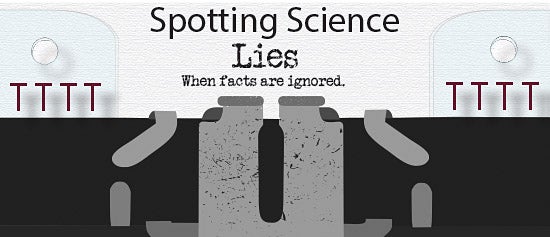
Social media, memes, websites and images are all great ways to learn a little bit about science. But what happens when you see science misinformation? It can be hard to tell what's true and what's a lie. Because inaccuracies can be easily spread through social media or even the news, it's important for students to know how to recognize when they’re being misled. Using media literacy (or fluency) skills — which help you understand, analyze and evaluate information — can ensure you're not tricked by online lies.
Six steps to spotting fake stories:
1. Read beyond the headline
The headline is not the whole story, so don’t read the headline and then assume you know everything about the article. Remember that the headline is just meant to grab your attention. Besides, it’s usually not the writer who creates the headline; it’s the editor, and it might not accurately reflect what’s in the story. So give the story a read and you’ll likely gain much more knowledge than you would if you just read the headline.
2. Research where your story comes from
When you're reading a story, stop and see what website it's on. Is it familiar to you? If not, do a quick search to see what others say about the organization, and look around at the other stories the site has published. Ask yourself if you would trust this source and see if you can spot any biases. If the site seems to have an ulterior motive or political interests, beware. Make sure to ask yourself how the story reinforces the potential biases.
3. Check the author
See if there’s an author given credit for the story. Many sites let you click on the author's name, which will take you to a bio and links to their other works. You may even see their social media accounts, which can give you a sense of their personality and views. What are the author’s credentials? Who do they work for? Are they a scientist or do they have science journalism training? Sometimes an author may not even be real, and researching the name and finding nothing can cast doubt on the story's validity.
4. Look up the sources
Credible stories have cited sources to back up their findings, either in a bibliography at the end or in hyperlinks you can click on within the story. Take the time to click those hyperlinks to see where they lead. Do these sources seem credible? Has anyone else reported this information? The sources can tell you a lot about a story’s credibility.
5. Figure out when the story was published
Make sure the story isn’t from the distant past. The world of science moves quickly: Theories may be disproven or modified over the course of time, and it’s important to stay up-to-date on your science news. Maybe the findings have changed since the story was published!
6. Check yourself
We all have our own biases and our own ways of seeing the world, which reflects how we interact with the media we find. Take a step back and think about your own biases on the topic you’re reading about. Think about how your opinions may affect the way you’re interacting with a story. If it aligns with your beliefs, you’re more likely to believe it. If it contradicts your beliefs, you might automatically dismiss it without giving it a fair shot.
Applying these six steps is a great start to finding out whether or not the information you see online is credible. The best tip of all is to develop a sense of skepticism toward the things you see online. If you don’t, you may become susceptible to widespread hoaxes, like the idea that children don’t need vaccines. This particular hoax has led to measles outbreaks across the United States as well as many European countries.

Read more about: Spotting Science Lies
Bibliographic details:
- Article: Spotting Science Lies
- Author(s): Serena O’Sullivan
- Publisher: Arizona State University School of Life Sciences Ask A Biologist
- Site name: ASU - Ask A Biologist
- Date published:
- Date accessed:
- Link: https://askabiologist.asu.edu/explore/spotting-fake-news
APA Style
Serena O’Sullivan. (). Spotting Science Lies. ASU - Ask A Biologist. Retrieved from https://askabiologist.asu.edu/explore/spotting-fake-news
Chicago Manual of Style
Serena O’Sullivan. "Spotting Science Lies". ASU - Ask A Biologist. . https://askabiologist.asu.edu/explore/spotting-fake-news
Serena O’Sullivan. "Spotting Science Lies". ASU - Ask A Biologist. . ASU - Ask A Biologist, Web. https://askabiologist.asu.edu/explore/spotting-fake-news
MLA 2017 Style

Be Part of
Ask A Biologist
By volunteering, or simply sending us feedback on the site. Scientists, teachers, writers, illustrators, and translators are all important to the program. If you are interested in helping with the website we have a Volunteers page to get the process started.
